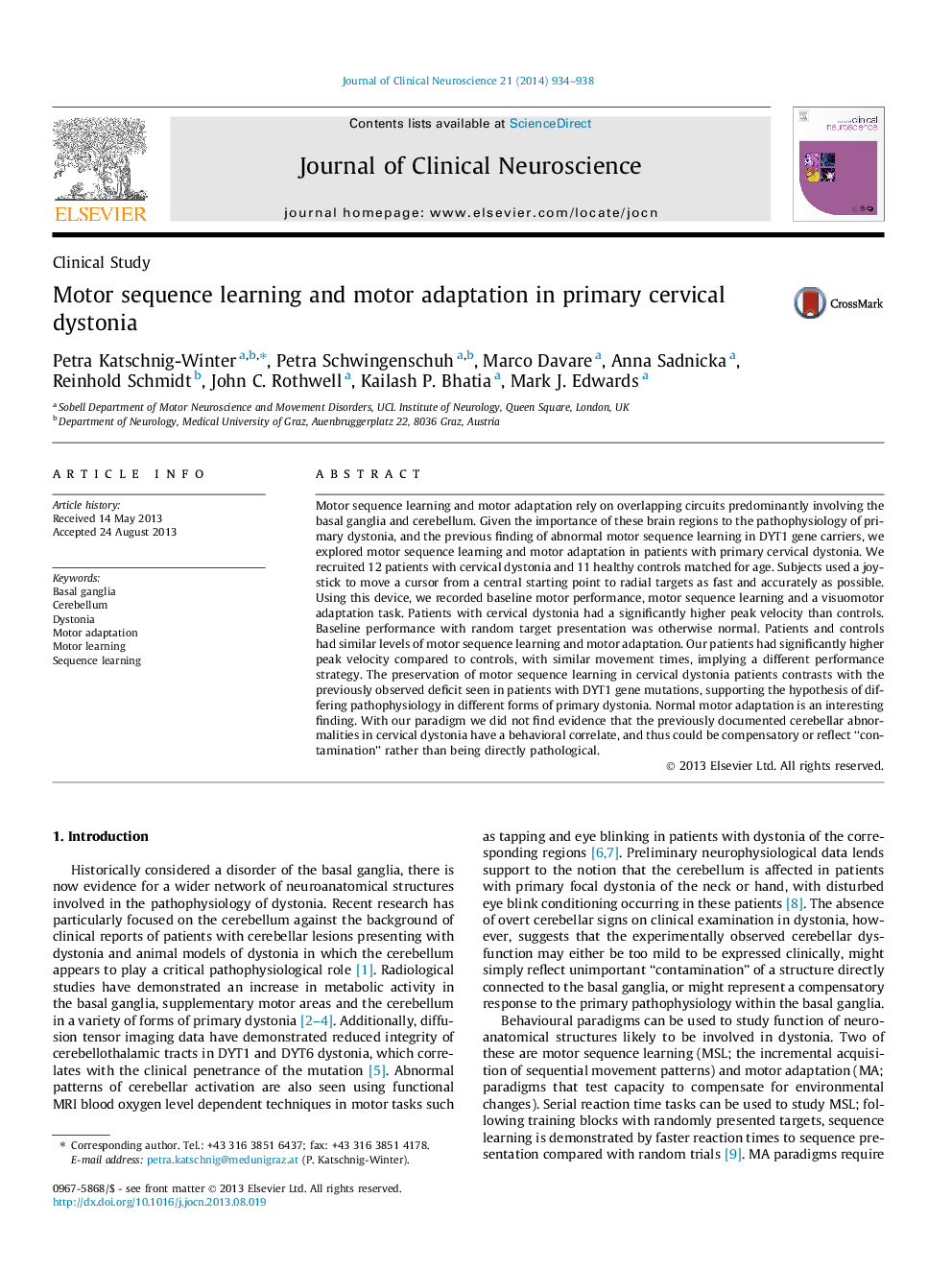| Article ID | Journal | Published Year | Pages | File Type |
|---|---|---|---|---|
| 3059487 | Journal of Clinical Neuroscience | 2014 | 5 Pages |
Motor sequence learning and motor adaptation rely on overlapping circuits predominantly involving the basal ganglia and cerebellum. Given the importance of these brain regions to the pathophysiology of primary dystonia, and the previous finding of abnormal motor sequence learning in DYT1 gene carriers, we explored motor sequence learning and motor adaptation in patients with primary cervical dystonia. We recruited 12 patients with cervical dystonia and 11 healthy controls matched for age. Subjects used a joystick to move a cursor from a central starting point to radial targets as fast and accurately as possible. Using this device, we recorded baseline motor performance, motor sequence learning and a visuomotor adaptation task. Patients with cervical dystonia had a significantly higher peak velocity than controls. Baseline performance with random target presentation was otherwise normal. Patients and controls had similar levels of motor sequence learning and motor adaptation. Our patients had significantly higher peak velocity compared to controls, with similar movement times, implying a different performance strategy. The preservation of motor sequence learning in cervical dystonia patients contrasts with the previously observed deficit seen in patients with DYT1 gene mutations, supporting the hypothesis of differing pathophysiology in different forms of primary dystonia. Normal motor adaptation is an interesting finding. With our paradigm we did not find evidence that the previously documented cerebellar abnormalities in cervical dystonia have a behavioral correlate, and thus could be compensatory or reflect “contamination” rather than being directly pathological.
